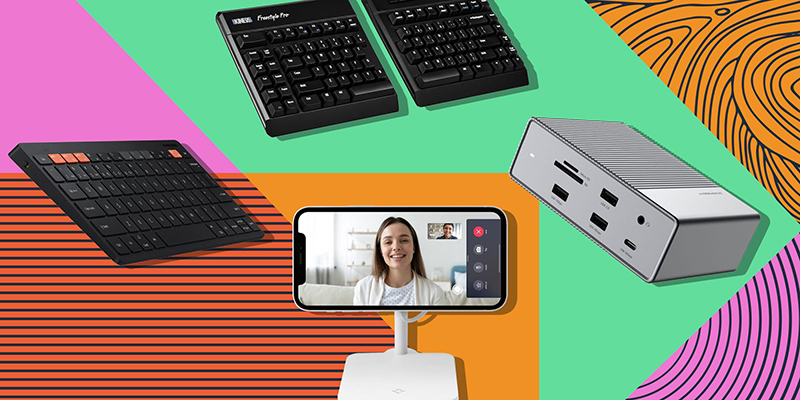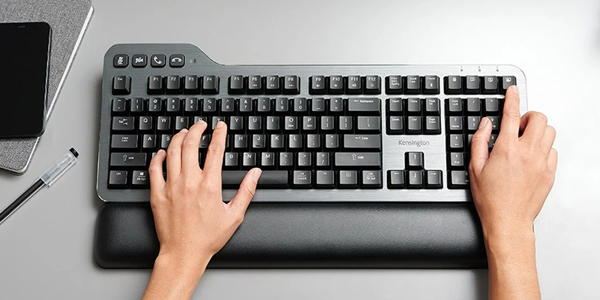Top 10 Must-Have Tech Gadgets For Remote Work (That’Ll Make Your Life Easier)
Working from home can seem like a dream—until you slouch so much that your back hurts, your Wi-Fi gives out in the middle of a meeting, or your phone dies in the middle of an email. In the past year, I've tested dozens of gadgets to make working remotely less chaotic and more productive. After years of trial and error, I've finally identified the non-negotiables. These tools have helped me save time, money, and sanity. Let's dive in.

Meet Your Back's Best Friend: The Ergonomic Office Chair
Sitting in a kitchen chair for eight hours? Ouch. Investing in a good ergonomic chair has changed my life. Choose one that has lumbar support, adjustable height and breathable fabric. I'm now using a chair that allows me to tilt back a little as I work on calls — it's like a mini Yoga session. Say goodbye to stiffness and sore muscles by lunchtime.
Standing Desk: Get Up And Walk, Make More Sense
More sitting is terrible for your health. The standing desk provides the option to alternate between sitting and standing. I have an electric model that has memory presets, so I don't have to mess with knobs. Pro tip: Stand up if you want to brainstorm; it ignites creativity! Pair it with a cushioned mat to help ease pressure on your feet.
Noise-Cancelling Headphones: Cut-Out Distractions
My neighbours are fond of lawn mowing at 9 a.m. Hello, noise-cancelling headphones. They drown out the chaos and sharpen video calls. I use wireless ones that last for a while — no more pulling on wires while on a Zoom call. Bonus: If your remote work is on the go, they're excellent for filtering out noisy coffee shops.
High-Resolution Webcam: Project Yourself Online
You look unprofessional in a blurry video call. Fix that with a 1080p webcam with autofocus and good lighting. I keep mine above my monitor to always be in the right frame. Some models also include built-in mics, killing two birds with one stone.
Portable Monitor: Double Your Screen Space
This slows you down using a tiny laptop screen. A portable monitor is light, USB-C-based and super productivity-enhancing. I use mine for spreadsheet-heavy tasks — no more squinting or endless scrolling. It’s also handy for coding side by side or watching tutorials while you work.
Mechanical Keyboard: More Responsive Typing, Quieter Clicking
Yet budget keyboards are clunky and noisy. The noise-reduction switch on a mechanical keyboard made me a rock star at typing. The tactile feedback lets me type quickly, and the keys last longer. I chose a small footprint design to conserve desk space. And the click feels weirdly therapeutic.

Smartphone With Long Battery Life: Keep 3D Going
Your phone is your lifeline for emails, apps, and emergencies. I upgraded to a model with all-day battery life and 5G, vital for hopping on calls when Wi-Fi is spotty or accessing files on the cloud." A tough case and screen protector are essential—drops occur.
Bright Lighting: Create The Right Atmosphere To Work
Blink, and the harsh overhead lights strain your eyes. Bright LED bulbs allow you to set brightness and colour temperature. I use warm glow in the mornings to rise gently and incredible light in the afternoons to be alert." Some even sync with your sunrise/sunset times for a natural rhythm.
Power Bank: Always Have a Charge
Dead laptop = panic mode—power a power bank (High Capacity) to charge devices while on the go. I carry one for coffee shop days or outdoor work sessions. Choose models that have fast charging capabilities or multiple ports. Your future self will thank you; trust me.
Laptop Stand: Stop The Death By Laptop
A laptop hunch is terrible for your posture. A stand raises your screen to eye level and helps prevent neck strain. I have a foldable one that's convenient to carry. Combine it with a wireless mouse and keyboard for a complete ergonomic workstation.
Upgrading Your Remote Work Setup
These gizmos aren't merely luxuries but investments in your health and productivity. Begin with the essentials, such as a chair and desk, and then include tools as your budget permits. The right technology will make your work easier and your journey of remote working pleasant.